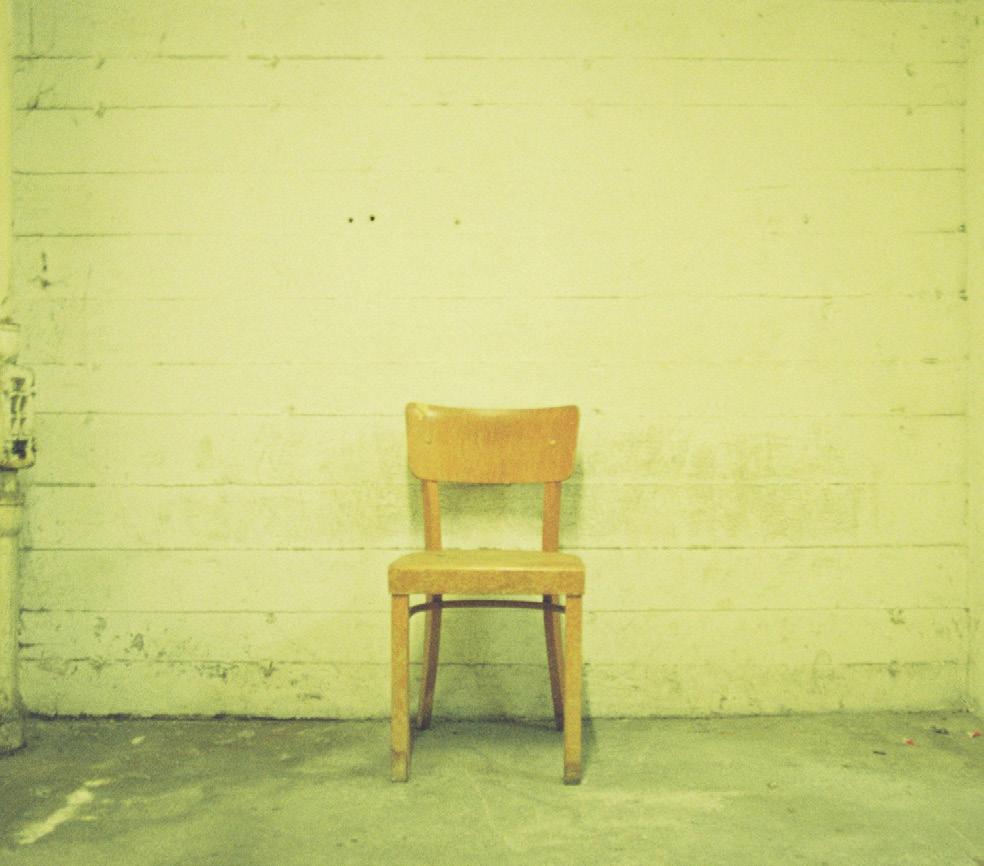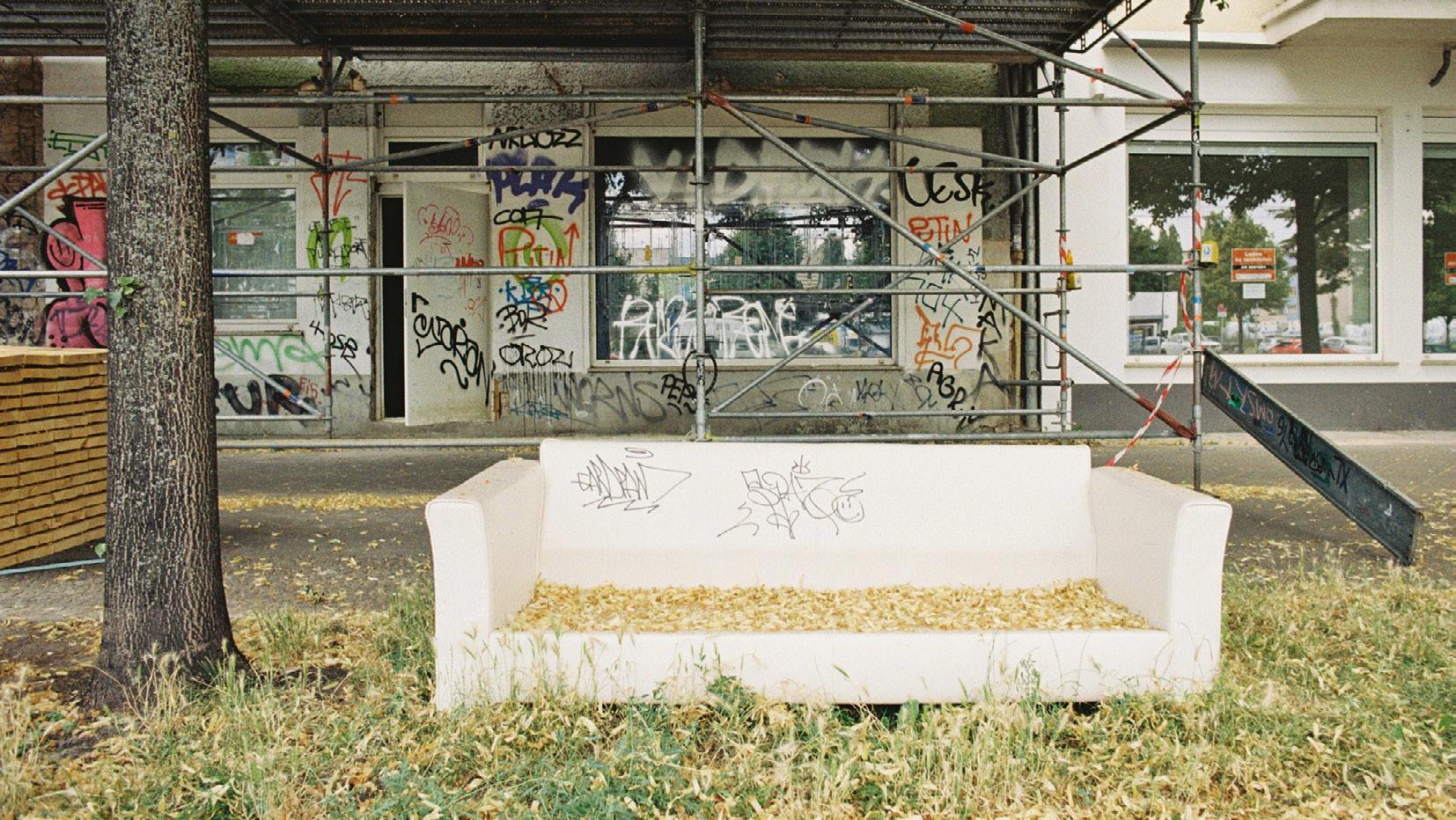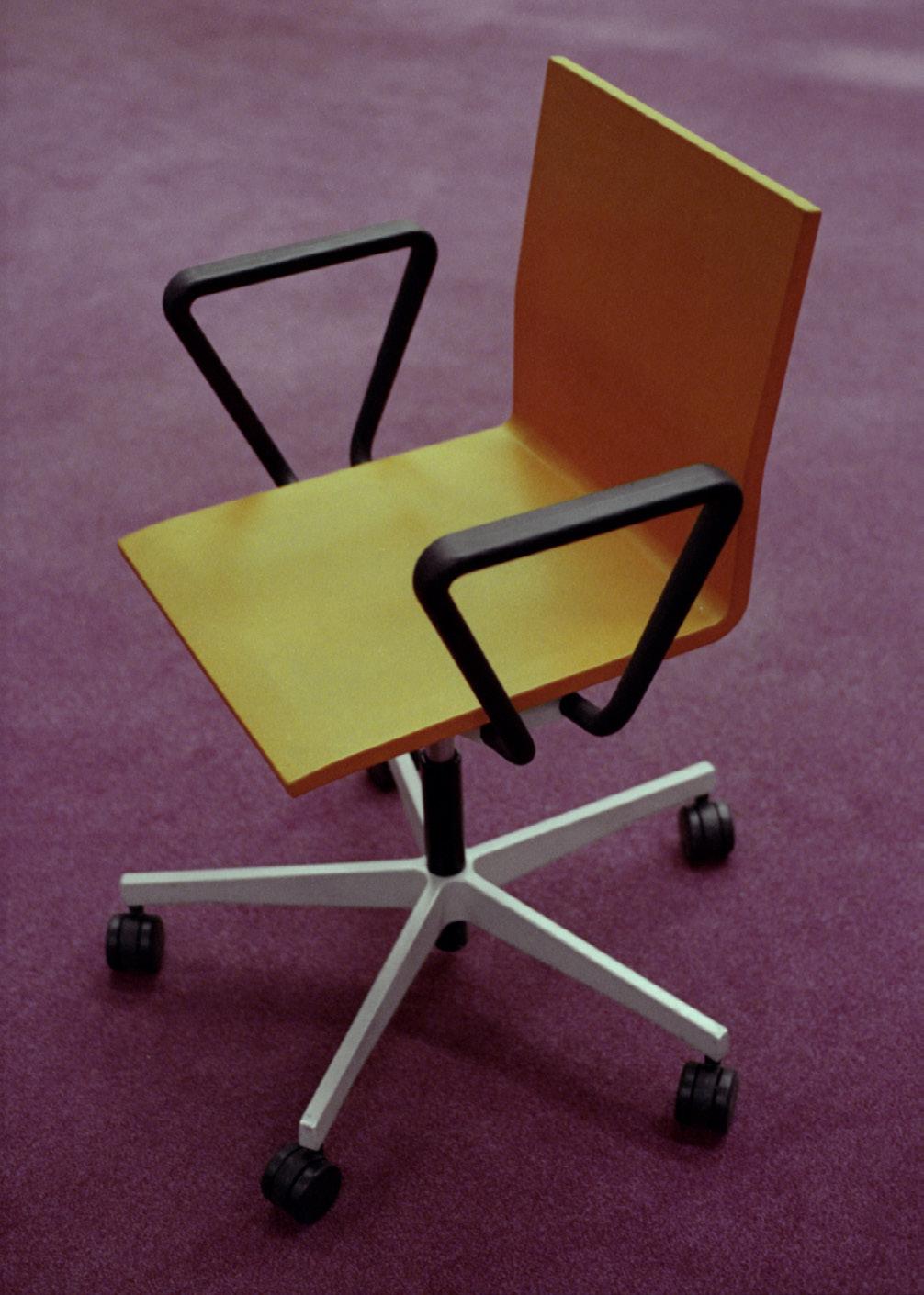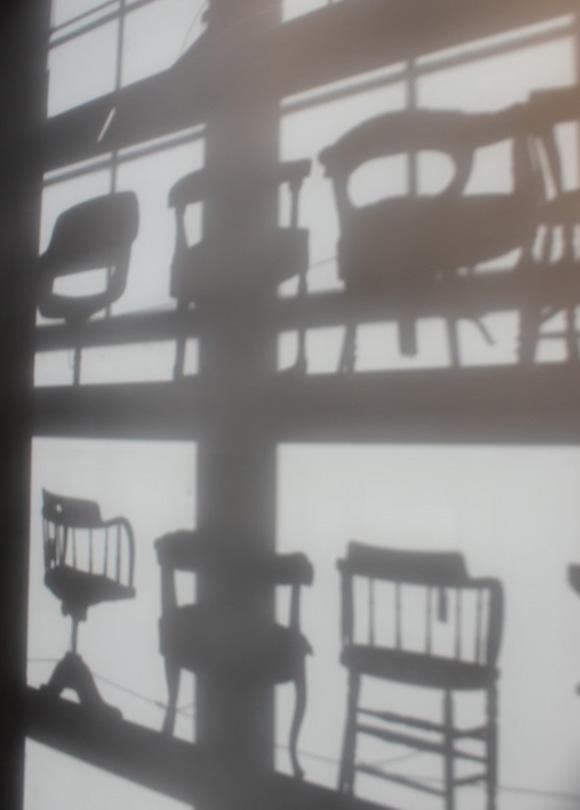
5 minute read
Abandoned Lounge
From the editors
Words and images Christopher Clarkson
Advertisement
The humble chair, couch, or stool, represents a place of rest. That place where you can be still. It invites you to cease your endless departure and stay a while. Much like a house, it beckons to you:
"Come, you have travelled far, be at ease, breathe, relax."
The humble chair, couch, or stool, however, can take on an interestingly sinister character when one stops to ask - why is it empty? Where did the people go? What have these 'normal' objects witnessed, and what memories do they carry in the folds of their faux leather, the screws in their wood, and the hair in their wheels?
That place which is no longer occupied is a curious thing. The chair not-in-use tells the story of thousands of people that have used it in the past; the story of thousands of people who have left. Please, take a moment to think about the chairs which you have sat on in your lifetime, and the events that have taken place while they sheltered you … And then acknowledge the fact that your story with any particular chair is not necessarily only your story but one you share with many people, in which case, really the chair is the protagonist of our collective seated narrative: it is a kind of silent witness and crucial actor in everyone’s life. This observation is
really strengthened by the chairs which have seemingly fallen out of use, and in a sense, reached the end of their story. All chairs have been designed to sit on, however, based on the space in which the chair is in, its function is defined (cinema chairs as opposed to a medical chair for example), and this space acts as a catalyst for the chair’s life. When the chair is relocated, suddenly its context-based purpose changes, and so too does its function, so what is it exactly that happens when a chair is positioned in a place that renders it not a good place to sit?
In the basement of a World War II bunker beneath Berlin's abandoned airport, Tempelhof, a modest wooden chair stands stark in the yellow fluorescence of a single tube overhead. Most of the time, the chair waits quietly in a dustless darkness. The disuse of this chair tells an interesting story, not only of those who once used it and likely feared for their lives from bombers overhead; but also of us now: a kind of optimistic exclamation of the fact that we don't need this chair and that we are not at war.
In the streets of Berlin, the couch takes on the patterned inscriptions (or differently put: graffiti) of passers-by. Much like the residential building behind, the couch acquires the character of a place of residence not fit for residing in. Autumn leaves that have been collecting create a new upholstery while the traffic rustles past and the bricks come raining down from the construction site overhead.
Perhaps in the previous summer the couch’s owner decided to move to another city and couldn't bring their couch with them. By donating their personal place of rest to the public space this couch is neglected and it becomes a symbol for departure. It serves now only as a final resting place for the leaves of autumn, and a canvas for the street artist's self-expression.

In the meantime, three arm chairs convene in the courtyard of abandoned houses of Kizalağaç. The sun scorches their bleached skins and a duvet cover dances in the wind, almost as if to entertain the sitters that are not there.
Unlike the chairs of Berlin, who offer a kind of extroverted invitation to the world to come and be seated, the armchairs of Kizalağaç are facing each other, positioned as if to encourage people to meet one another and spend time together. If I were to sit in one of these chairs would a passer-by join me to watch the duvet cover’s terpsichorean abilities? Three chairs facing each other in a lounge represent a place of communion. Now, appearing as if the walls of the lounge have been removed but the chairs remain in exactly the same arrangement, they tell a story of people who no longer see one another.

And so, we reach the chairs closest to home: The Vitra model .04 office chairs who find themselves residing in atelier. These chairs day in and day out experience the abuse of panicked first years and apathetic second-year bachelor’s students trying to hang up their posters before presentations. And at 22:00 every day, when all students and staff retire to their homes, the Vitra model .04 chairs lie awake in the darkness kept company by only the flickering locker lights and mice who run between their mass-produced plastic wheels. Some unfortunate Vitras have suffered mutilation from particularly bored persons, missing wheels or stabilising screws they stand askew on their fuchsia ground, immobilised, and abandoned until the next morning.


Finally, the chairs of our beloved ‘stoelen collectie’ lead perhaps the most alienated existence of all. Standing at full attention, they face a now-blank wall, from which even the painted names have departed. Seeing only on occasion their own shadows moving with the sun they listen to an excitable prospective student spotting Rietveld’s Red and Blue Chair without taking the time to acknowledge the existence of the other chairs. Like animals in a zoo, their true calling has been denied. Caught in limbo, these chairs are not left alone to fade away in the urban fabric of the street, or slowly die in a Turkish breeze, nor may they be used as chairs to sit on; they are preserved in time, carrying only the memories of who they were before they became objects of exhibition.








